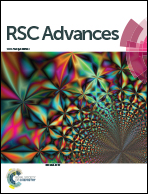Shape-controlled synthesis of magnetic Fe3O4 nanoparticles with different iron precursors and capping agents
Abstract
This paper describes a modified method to prepare monodisperse Fe3O4 magnetic nanoparticles with different shapes (cube, octahedron, and sphere). The shape of the magnetic nanoparticles could be conveniently controlled by changing the types of precursor/capping agent and concentration of capping agent. The prepared samples were characterized using scanning electron microscopy, X-ray diffraction and vibrating sample magnetometry. Cubes and octahedra were formed using ferrous sulfate heptahydrate as an iron source, ethylene glycol as a solvent and potassium hydroxide (KOH) as a capping agent while spheres were formed by using ferric chloride hexahydrate as an iron source, ethylene glycol as a solvent and ammonium acetate as a capping agent. By varying KOH concentration (0.5 M, 1 M, 1.5 M, and 5 M), the shape was transformed from cubes to octahedra because octahedra are developed dominantly at higher concentration of KOH within the reaction mixture. The magnetic studies show superparamagnetic behavior for all samples at room temperature. The Fe3O4 nanoparticles show the magnetic saturation values of 87 emu g−1, 85 emu g−1, and 82 emu g−1 for spheres, cubes, and octahedrons, respectively.



 Please wait while we load your content...
Please wait while we load your content...